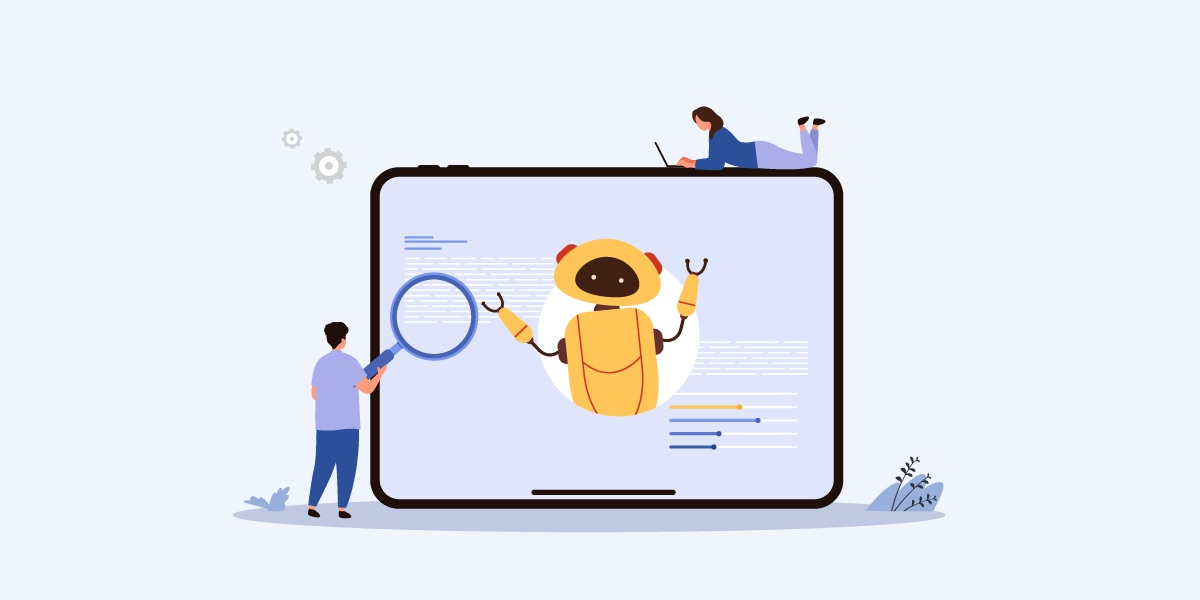
Bot traffic refers to automated software applications, known as bots, that visit websites or use online services. Bots can be beneficial, like search engine crawlers or harmful, such as those used for scraping data or launching DDoS attacks. Businesses need to understand and detect bot traffic to protect their resources and maintain the integrity of their online operations.
What are good bots?
Good bots include search engine crawlers like Googlebot or Bingbot, which index web pages to improve search engine results. It is thanks to search engine bots that the Internet user can easily find the web page that they are looking for. Indexed pages allow the user to retrieve search results that contains specific phrases.
Commercial websites often employ monitoring tools and website health checkers that also fall under the category of good bots. They help website owners to identify issues and improve performance. These bots are always checking whether the website is responding to request as well as keeping track of the response times. Very useful to determine if the server is overloaded or under attack.
Examples of bad bots
Bad bots are designed to perform malicious activities, such as scraping content, committing fraud or launching cyberattacks. Examples include content scrapers, credential stuffers and bots used in distributed denial-of-service (DDoS) attacks.
Content scrapers are usually used to harvest information from websites. Bad actors may use them to scrape social media content in order to perform phishing. Scrapers can be utilized to steal proprietary data from websites too.
Meanwhile, credential stuffers are bots that attempt to login to various websites with login credentials collected from data breaches. Many people tend to reuse the same login and password combination on multiple websites. Therefore, these credential stuffer bots will try out those compromised credentials to find those that work. The operators of the bots will then sell the credentials on the dark web.
Another common example of malicious bots is the DDoS bots. Their job is to overload websites by making a huge number of web page requests. The main goal is to prevent legitimate users of the websites from being able to access the web pages.
Why do we need to detect and block bad bots?
Bad bots can skew website analytics, leading to inaccurate data analysis and misguided business decisions. They can consume server resources, slowing down website performance or causing downtime, resulting in revenue loss. Scraping bots can steal valuable content, undermine intellectual property rights and damage brand reputation.
Website operators need to detect and block these bad bots to conserve server resources and minimize downtime. Besides that, being able to detect and block bad bots can harden their network and server infrastructure against DDoS and hacking attempts.
Benefits of good bots
Good bots help to improve a website’s visibility in search engine results, driving organic traffic and potential leads. Monitoring bots assist in identifying website issues promptly, thus ensuring a seamless user experience and maintaining customer satisfaction.
How to detect bots?
IP2Proxy PX11 is a comprehensive solution for detecting and mitigating bot threats by analyzing IP addresses. It offers real-time IP geolocation and proxy detection capabilities to identify the origin and type of web traffic. With its extensive database of proxy servers and botnet IPs, IP2Proxy PX11 enables businesses to block malicious traffic effectively.
The PX11 data currently classifies proxy servers into the following types:
- VPN – Virtual Private Network
- PUB – Open Proxies
- WEB – Web Proxies
- TOR – Tor Exit Nodes
- DCH – Data Center Ranges
- SES – Search Engine Spider
- RES – Residential Proxies
- CPN – Consumer Privacy Network
- EPN – Enterprise Private Network
Learn more about these proxy types.
Whenever users connect to a website using one of these proxy types, there are varying levels of risk involved for the website operators in terms of possible frauds. Fraudsters will try to hide their identity and location using VPN, TOR and RES for the most part. Therefore, flagging users that visits a website using those 3 proxy types is vital to prevent fraudulent orders for online stores.
The residential proxies are the hardest to detect as the Internet traffic is being routed through home users’ networks. Fortunately, the PX11 data is able to detect such proxies, especially from the big proxy providers.
By relying on the PX11 database or the API, website owners are able to stop hackers, fraudsters and other malicious parties before they can inflict damage to the network and server infrastructure. In doing so, it will help to safeguard the integrity of the customer data.
Try out the IP2Proxy demo.
For more info about the IP2Proxy PX11.
Conclusion
Bot traffic poses significant challenges to businesses, ranging from degraded website performance to security risks and revenue loss. Effective detection and mitigation of bot threats require the use of specialized tools like IP2Proxy PX11. By leveraging IP2Proxy PX11’s advanced features for IP geolocation, proxy detection and threat intelligence, businesses can safeguard their online assets and mitigate the impact of bot-related activities on their operations.
DISCOVER THE POWER OF IP GEOLOCATION
Find a solution that fits.
